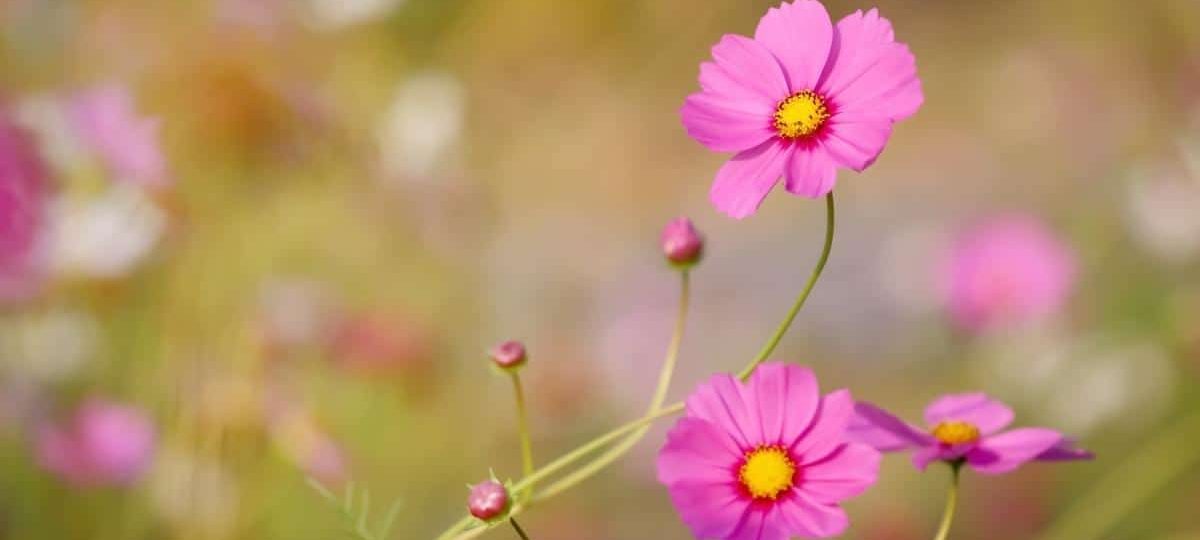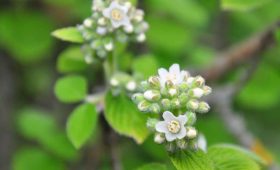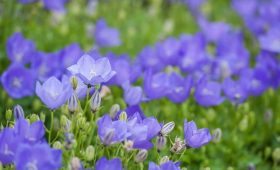memme.info – The Mexican Aster (Cosmos bipinnatus), often referred to as the wild aster or simply Cosmos, is a vibrant and resilient annual flower that brings color and charm to any garden. Known for its bright, daisy-like blooms and feathery, fern-like foliage, the Mexican Aster is an excellent choice for gardeners seeking a low-maintenance plant with a long flowering season. Its striking blossoms, which come in a variety of colors, make it a favorite for pollinator gardens, cottage gardens, and even cutting gardens due to their beauty and ability to attract butterflies and bees.
Origins and Habitat
Native to Mexico and Central America, the Mexican Aster is well-adapted to warm, sunny environments. It thrives in full sunlight and is highly tolerant of heat and drought, making it an ideal choice for regions with dry conditions. Although it’s an annual in most climates, it’s a fast-growing plant that can quickly fill garden spaces with vibrant color, blooming from mid-summer through fall. Its adaptability to various soil types and growing conditions has made it a popular plant in many temperate gardens around the world.
The Mexican Aster is not only cherished for its beauty but also for its ability to thrive in poor, well-drained soils. It can often be found growing in open fields and roadsides in its native habitat, where it brightens up the landscape with its cheerful, colorful flowers.
Characteristics and Varieties
The Mexican Aster is a tall-growing, bushy plant, typically reaching heights of 2 to 5 feet, depending on the variety and growing conditions. It features slender, fern-like leaves that are light green in color and contribute to its airy, delicate appearance. The flowers of the Mexican Aster are the main attraction, boasting bright, showy blooms in shades of pink, purple, white, and even red. These flowers resemble daisies, with a central yellow disk and narrow, petal-like rays that spread outward.
The blooms are abundant, appearing in clusters at the tips of long, slender stems, and can last for weeks, especially if the plant is deadheaded regularly. Mexican Asters are known for their long flowering period, often blooming from early summer until the first frost, providing a continual source of color in the garden.
There are several varieties and cultivars of Mexican Aster that vary in flower color, plant height, and bloom shape. Some popular varieties include:
- ‘Double Click’ Series: These varieties have fully double flowers that resemble small chrysanthemums. Available in shades of pink, white, and purple, they offer a more compact and bushy growth habit.
- ‘Psyche’ Series: Known for their brilliant, deep purple flowers, these varieties create a striking contrast with the lighter, more delicate colors of other cosmos cultivars.
- ‘Sonata’ Series: A dwarf variety that grows only about 1 foot tall, perfect for containers or small garden spaces, with blooms in shades of pink, white, and purple.
Growing Mexican Aster
Mexican Asters are incredibly easy to grow, making them an excellent choice for both novice and experienced gardeners. They prefer full sun and thrive in warm, dry conditions, although they can tolerate light shade in hotter climates. These plants are well-suited to a variety of soil types, including poor or sandy soils, as long as the soil drains well.
To grow Mexican Aster from seed, sow the seeds directly in the garden after the last frost date or start them indoors about 6 to 8 weeks before the last frost. Transplant the seedlings once they’ve grown large enough and the weather has warmed. Mexican Asters are not very particular about soil but will benefit from regular watering during dry spells, especially when they are getting established.
Once planted, Mexican Asters require minimal care. They are drought-tolerant and can handle periods of dry weather, making them perfect for xeriscaping or low-water gardens. However, to encourage prolonged blooming, regular watering and occasional feeding with a balanced fertilizer will support healthy growth and vibrant flowers.
Deadheading spent flowers will encourage more blooms and help keep the plant looking tidy. Although Mexican Asters are annuals in most climates, they often self-seed, and you may find new plants growing in your garden the following season.
Wildlife and Pollinator Benefits
One of the standout features of the Mexican Aster is its ability to attract a wide variety of pollinators. The vibrant blooms are a favorite of bees, butterflies, and other beneficial insects, providing essential nectar throughout the summer months. The plant’s long flowering period, from mid-summer to fall, makes it an important late-season nectar source for pollinators.
In addition to attracting pollinators, the Mexican Aster is also beneficial for other wildlife, such as birds. The seeds of the flower are consumed by birds in the fall and winter, further contributing to the plant’s ecological value in the garden.
Symbolism and Significance
In the language of flowers, the Mexican Aster is often associated with love, beauty, and harmony. Its bright and cheerful blooms symbolize joy and positivity, making it a popular choice for bouquets, garden arrangements, and floral gifts.
In Mexican culture, the aster flower is sometimes linked to themes of remembrance and celebration, often appearing in festivals and ceremonial gardens. Its vibrant colors and abundant blossoms make it a symbol of vitality and enduring beauty.
Mexican Aster in Garden Design
Mexican Asters are incredibly versatile in garden design. Their tall, bushy habit makes them an excellent choice for the middle or back of flower beds, where their bright blooms can be seen above shorter plants. They also work beautifully in cottage gardens, wildflower meadows, or as part of a mixed perennial bed.
Their long flowering period and ability to attract pollinators make Mexican Asters perfect for pollinator gardens. They can be paired with other late-season bloomers such as black-eyed Susans, coneflowers, or zinnias to create a continuous supply of nectar throughout the growing season. In addition, Mexican Asters look stunning when planted in mass or as part of a mixed planting, providing a bold pop of color in any garden design.
For a more formal look, Mexican Asters can be grown in containers or along pathways, where their vibrant flowers will greet visitors with their cheerful display. Their low-maintenance nature also makes them a great choice for low-water and xeriscape gardens.
Conclusion
The Mexican Aster is a vibrant, easy-to-grow annual that adds beauty and ecological value to any garden. With its bright, daisy-like flowers, fern-like foliage, and ability to attract pollinators, it is a must-have for gardeners seeking a colorful and resilient plant for their landscape. Whether planted in a wildflower meadow, pollinator garden, or as part of a cottage-style bed, the Mexican Aster’s cheerful blooms and long flowering period will provide color and life to your garden from summer through fall. Its versatility, low-maintenance requirements, and wildlife benefits make it a valuable addition to any outdoor space.




